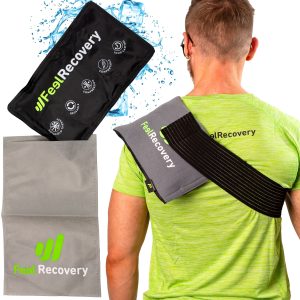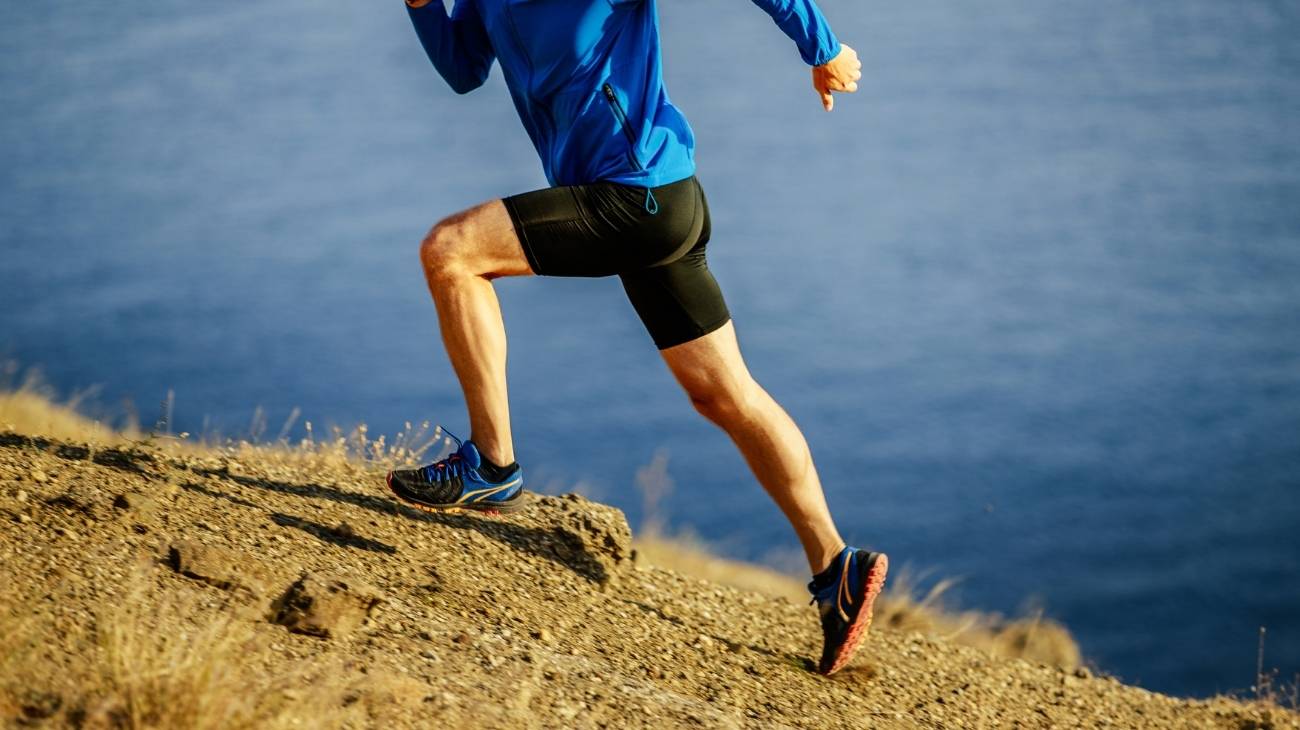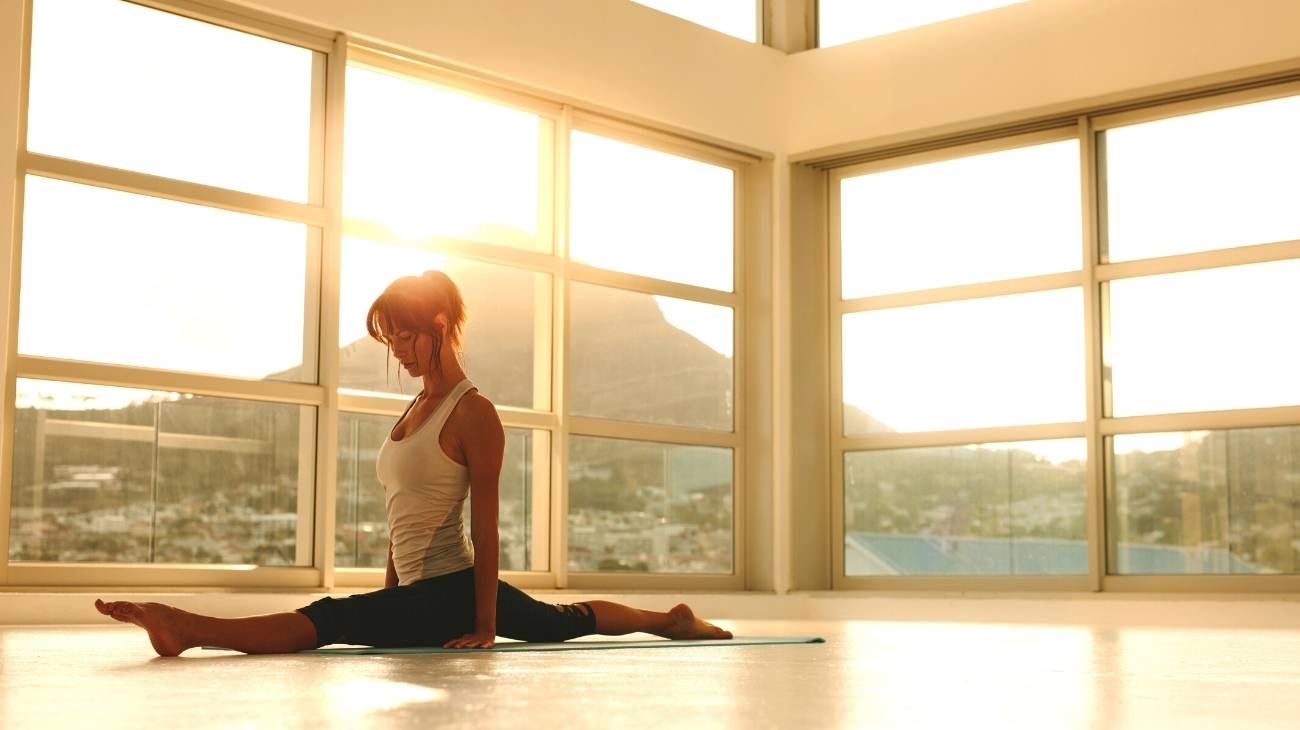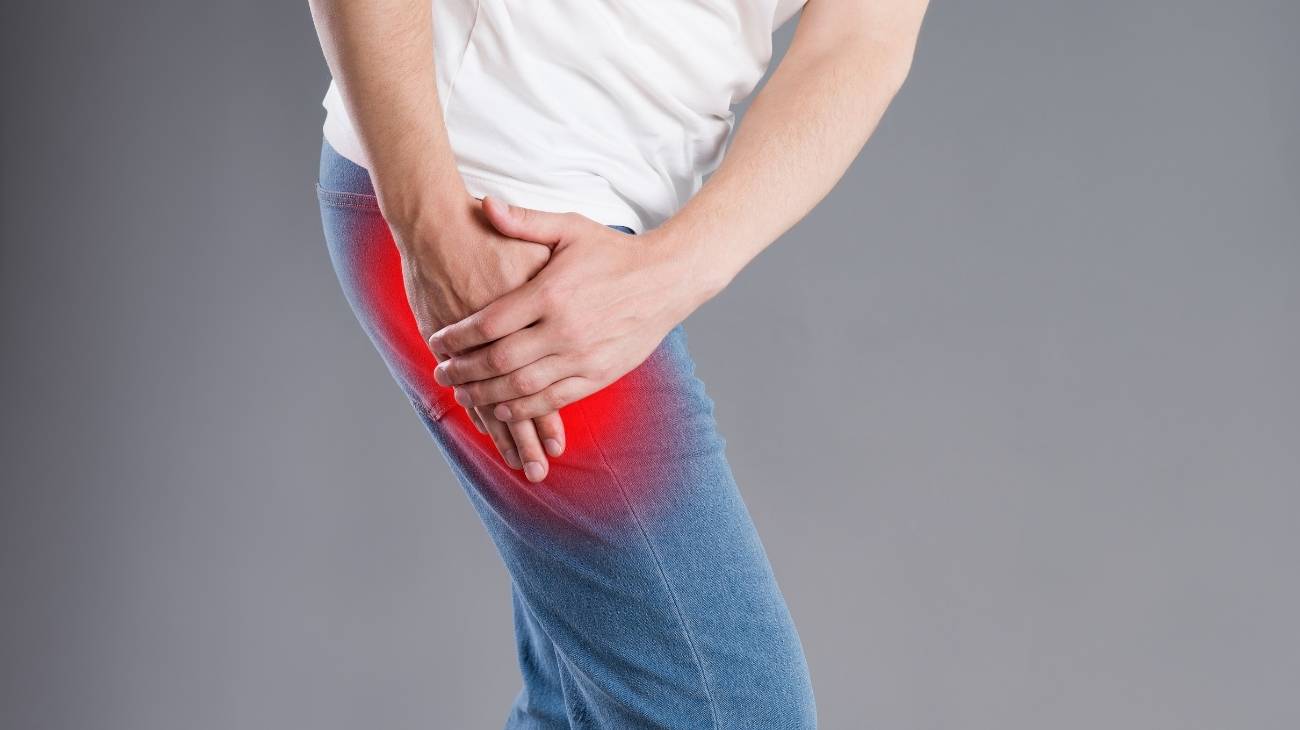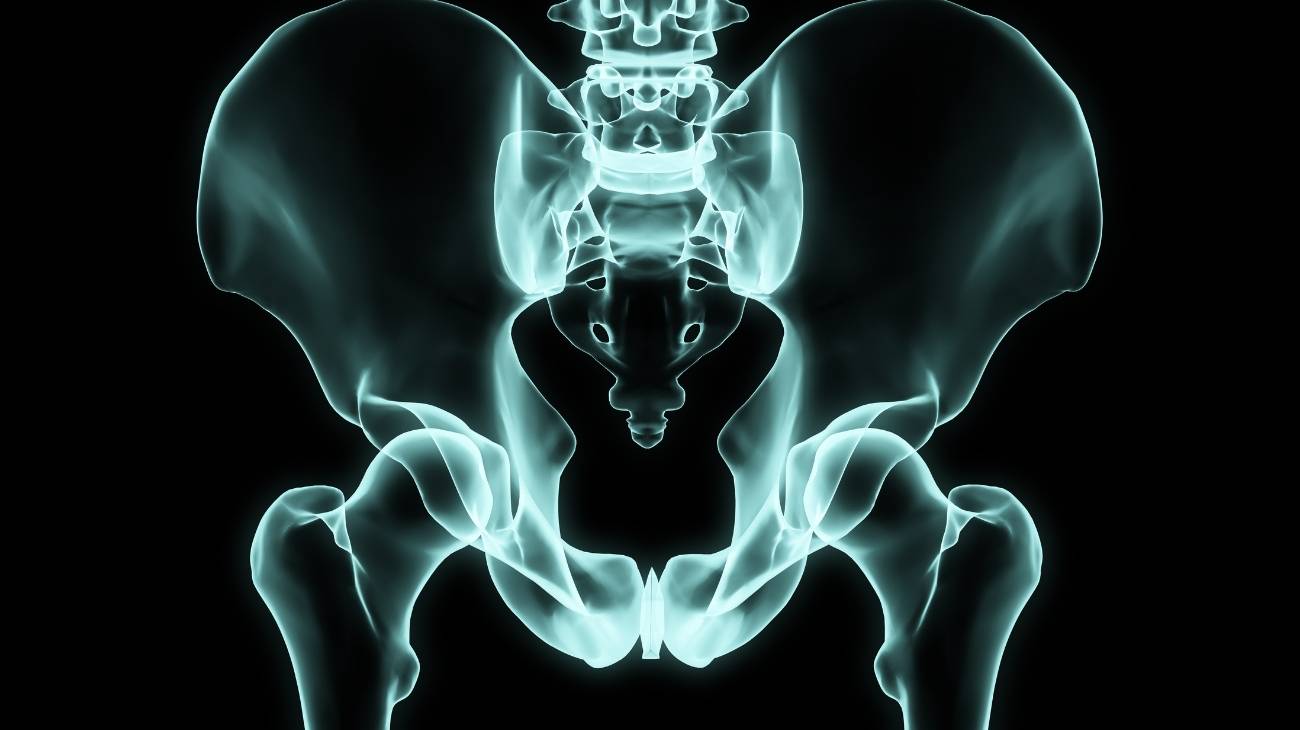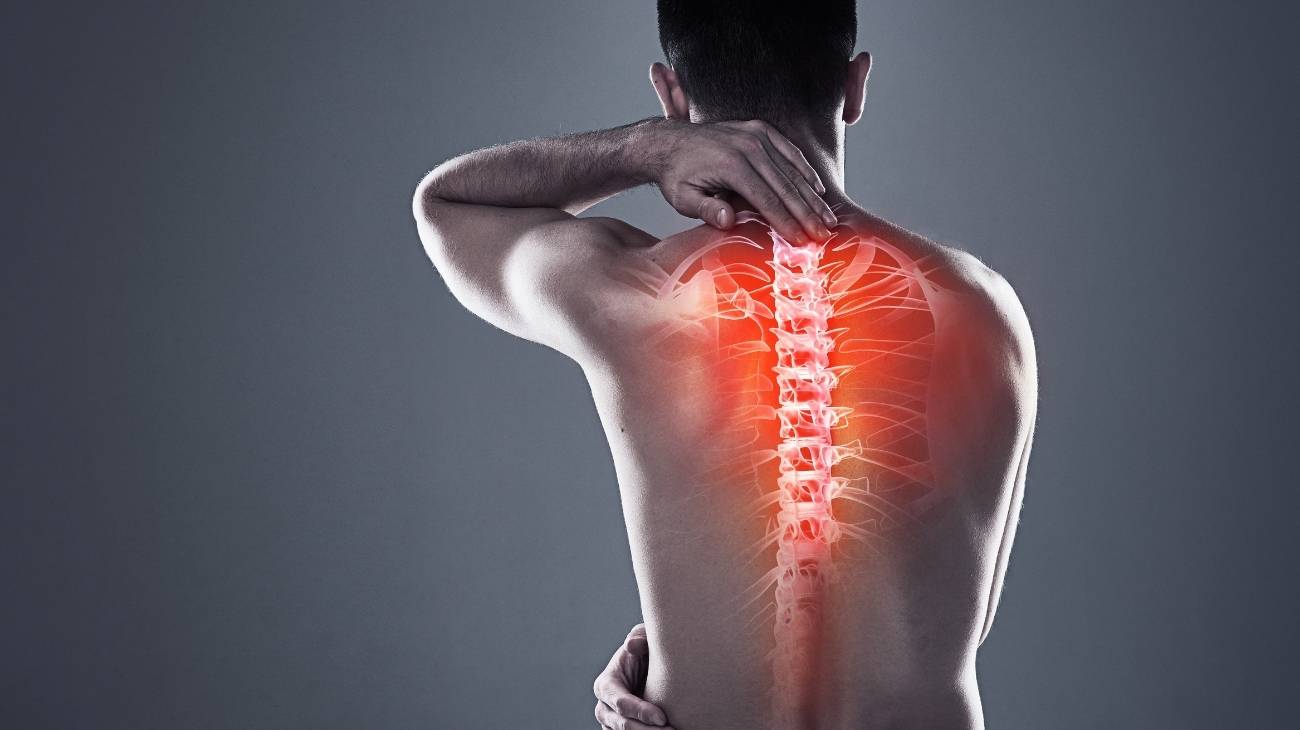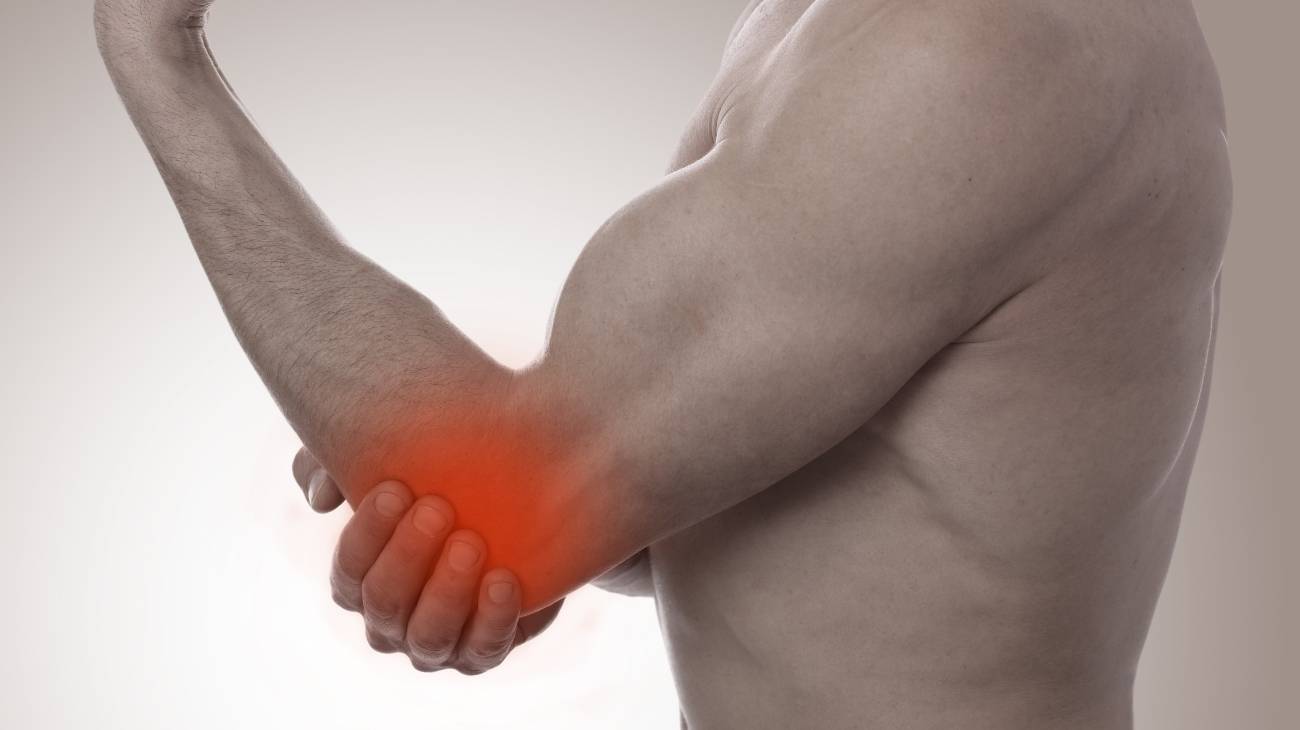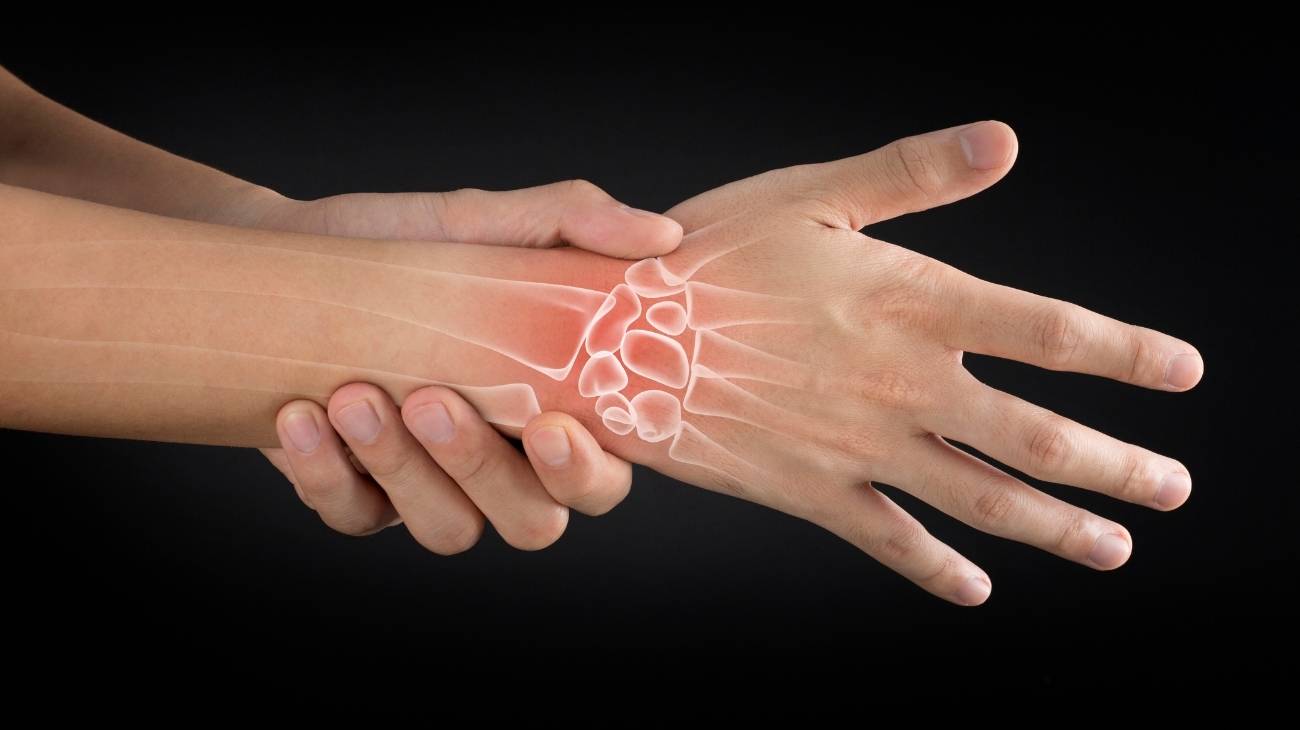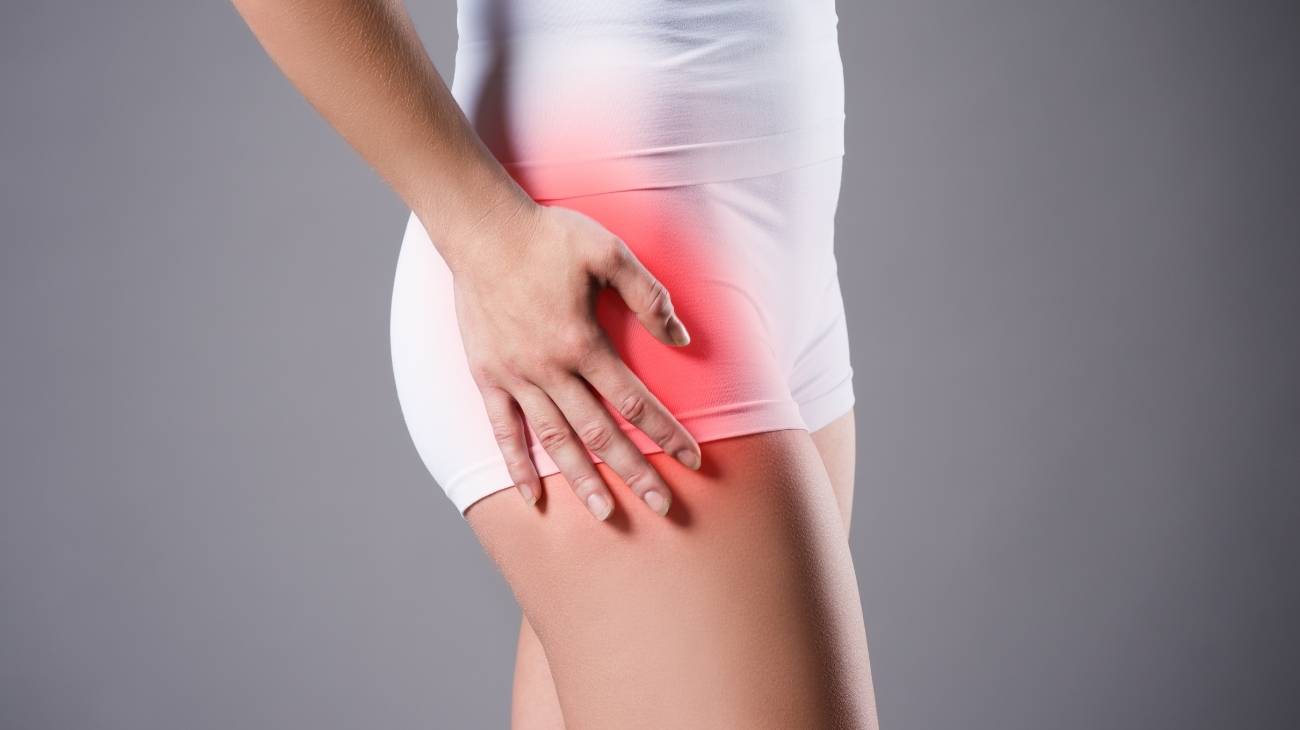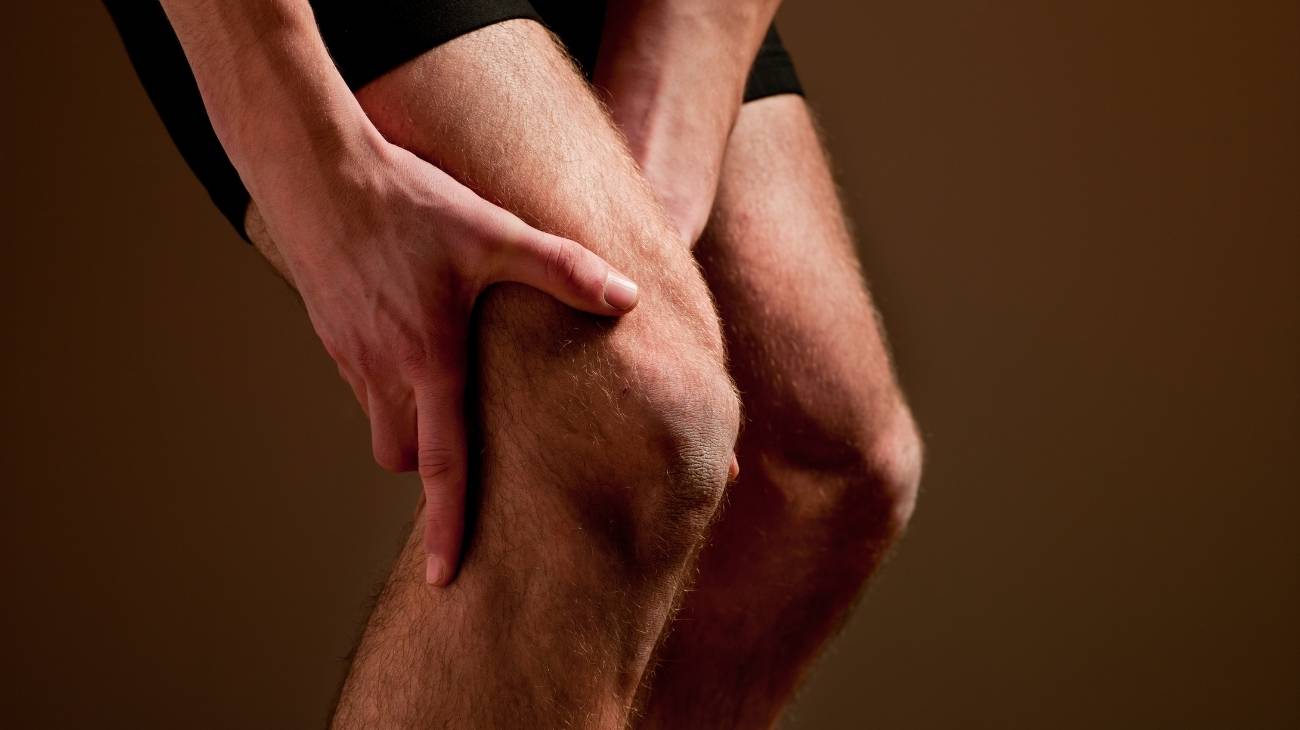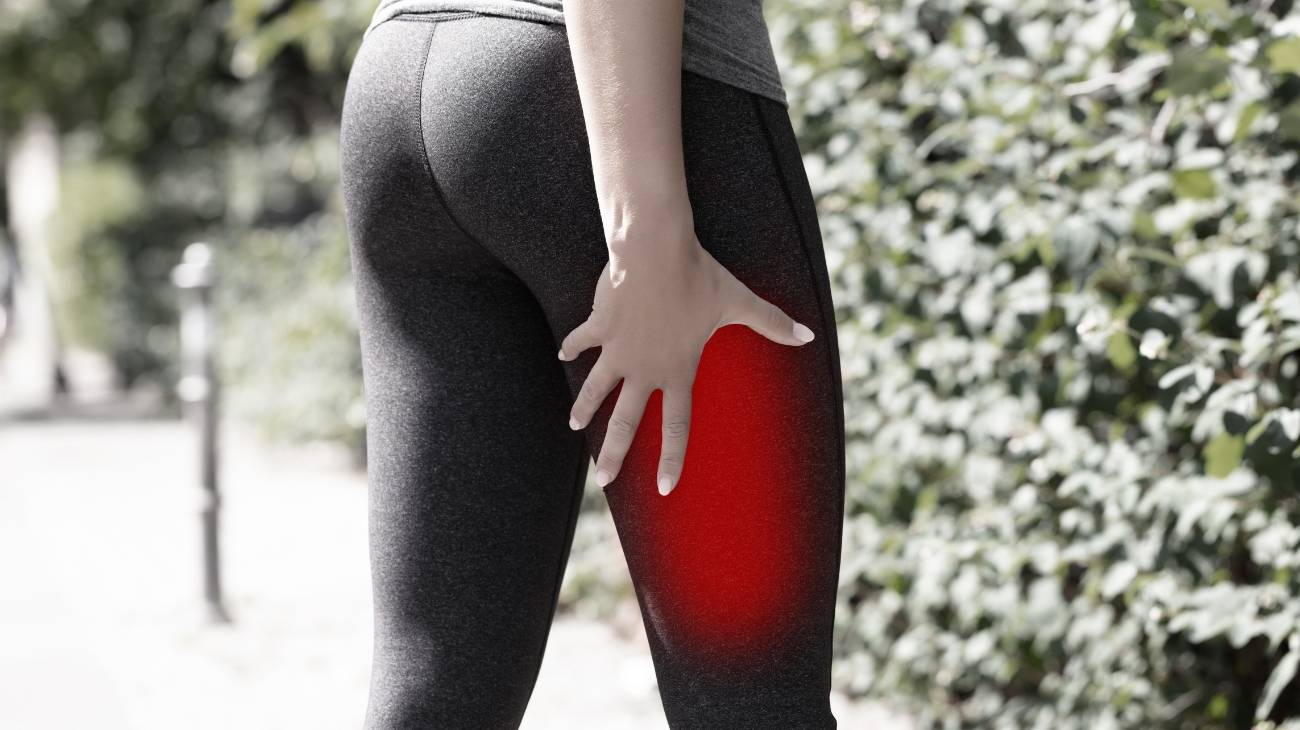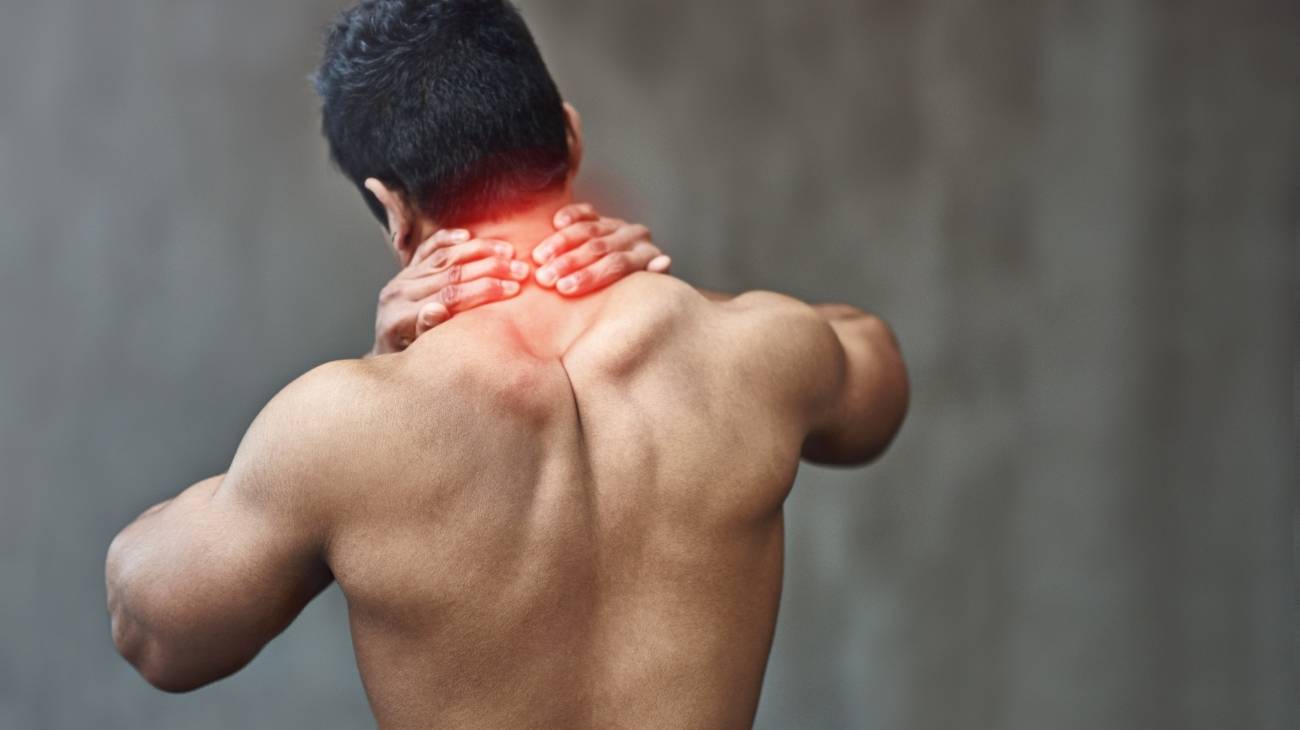Unless it is due to wear and tear from years of sporting or occupational activity, hip injuries appear in middle and old age. They are also associated with degenerative diseases and ailments. In this article you will find everything you need to know about the hip.
Do you know what the most common types of hip injuries are? We'll tell you the signs to look out for to detect them. We'll show you how to apply the PRICE therapy in case of a minor injury and we'll tell you which are the best products on the market for overcoming a hip ailment.
What types of hip injuries can we suffer from?
The hip is the largest and widest bone in the human body, and it takes a lot of force for it to fracture. Degenerative diseases, excessive sports training and trauma are the main causes of injury.
Tendonitis
There are several tendons in the hip that transmit the force from the muscles to the bones. The tendons become irritated and inflamed by repeated movements such as walking, cycling, repetitive movements and any number of activities involving the hip joint.
If it is only mild inflammation it is tendonitis, but when the tendons are partially or completely ruptured then we are in the presence of tendinosis. Surgery is usually the only option to repair the latter condition.
Muscle strain
This is due to overstretching of one of the muscles that make up the hip to the point of causing micro-tears in its structure. It is another injury caused by repetitive, intense or sudden movements due to high-impact sports or repetitive work activities.
Only excessive twisting of the hip will cause a muscle strain, although fatigue and muscle malnutrition help this injury to occur. This is why good nutrition and daily hydration are vital to prevent this type of hip injury.
Stress fractures
This is not a mental stress, it is a stress from increased pressure on the bony structure of the hip that results in small fractures or microfractures. If the fracture is minimal there will be no pain, but in most cases there is intense localised pain.
This type of injury is associated with generalised tiredness and muscle fatigue from excessive sports training or a stressful and demanding life. If the soft tissues, such as muscles and tendons, are fatigued, the stress falls on the bones and therefore they are more stressed and more prone to fracture.
Bursitis
Bursitis is inflammation and excess fluid in the bursa, a kind of cushion located inside the joints that make up the hip. When the bursa becomes inflamed, drainage is necessary to relieve pain and reduce swelling.
A bursa cushions friction and lubricates the joints so that there is good mobility at all times. It is also an injury caused by significant wear and tear on the muscles. Knowing our body helps us to locate the causes of all types of injuries.
Pelvic fracture
This is considered a serious injury because it may involve one or more of the five bones that make up the hip: the pubis, sacrum, ilium, ischium and coccyx. It may be a complete detachment, cracks or multiple fractures, often due to traffic accidents.
When the hip is broken, there is usually soft tissue injury. Then the best option is surgery and even a complete hip replacement. In people with osteoporosis and in older people, hip fracture is very common, initially blamed on a fall, but it is the fracture that happens first and causes the fall.
Dislocations
Only occurs when the end of the femur slips out of its usual place in the hip, causing severe pain that is felt both in the leg and in the pelvis. It also causes inability to move, swelling and joint deformity.
The bone must be manually repositioned in its place of origin, which will help to control the pain. This manoeuvre must be carried out by health personnel and an X-ray will give more information about the injury, so that the specialist can determine whether or not surgery is required.
Hip sprain
Ligaments surround the hip and hold it firmly in place. Only a strong blow can cause a partial or complete tear in their fibres. If the muscles are weak due to malnutrition, lack of tone or fatigue, the likelihood of a sprain increases.
In these cases, applying ice for the first 24-72 hours after the injury will help reduce swelling and should be accompanied by complete rest.
Contusions
If you suffer a fall or a heavy blow there will be swelling and bruising of the skin as a result of trauma which often lasts for a few days. As mentioned above, the danger is if the person has osteoporosis and osteoarthritis which can create a more severe injury.
Middle-aged and older people should be more cautious to avoid falls that can lead to fractures as well as simple contusions.
Best products for hip injury recovery
Bestseller
-
Microwave Wheat Bag for Back Pain Relief (Extra Large) (Hearts)
£24,95 -
Microwave Wheat Bag for Back Pain Relief (Extra Large) (Oxford)
£24,95 -
Microwave Wheat Bag for Back Pain Relief (Extra Large) (Sport)
£24,95 -
Microwave Wheat Bag for Neck & Shoulder Pain Relief (Hearts)
£24,95 -
Microwave Wheat Bag for Neck & Shoulder Pain Relief (Oxford)
£24,95 -
Microwave Wheat Bag for Neck & Shoulder Pain Relief (Sport)
£24,95 -
Microwaveable Wheat Bag for Pain Relief (Hearts)
£20,95 -
Microwaveable Wheat Bag for Pain Relief (Oxford)
£20,95 -
Microwaveable Wheat Bag for Pain Relief (Sport)
£20,95 -
Wheat Bag for Microwave Classic Bottle Shaped (Hearts)
£20,95 -
Wheat Bag for Microwave Classic Bottle Shaped (Oxford)
£20,95 -
Wheat Bag for Microwave Classic Bottle Shaped (Sport)
£20,95
-
Back Support Belt (Black)
£39,95 -
Back Support Belt (Green)
£39,95 -
Back Support Belt (Pink)
£39,95 -
Ice Massage Roller Ball (Black)
£34,95 -
Ice Massage Roller Ball (Green)
£34,95 -
Ice Massage Roller Ball (Pink)
£34,95 -
Sacroiliac Support Belt (Black)
£24,95 -
Sacroiliac Support Belt (Green)
£24,95 -
Sacroiliac Support Belt (Pink)
£24,95 -
Soft Density Foam Roller for Recovery (Black)
£34,95 -
Soft Density Foam Roller for Recovery (Green)
£34,95 -
Soft Density Foam Roller for Recovery (Pink)
£34,95
What are the causes of hip pain?
In truth, there are few causes of pain and discomfort in the hip because it is a strong bone, with highly resistant tendons, muscles and ligaments. Let's see which are the most common so that we can prevent them in the future.
Advanced age
From the age of 50 onwards, bones lose their strength and bone density, and the hip is no exception. The periosteum is a connective tissue membrane that covers the bones and with advancing age it loses its bone protection.
The passing of the years, a sedentary lifestyle and a poor diet, as well as unhealthy lifestyle habits such as smoking or alcohol, will make injuries more and more frequent and it is up to the individual to try to avoid future ailments.
Degenerative diseases
Osteoporosis and osteoarthritis are hereditary diseases that are sometimes intensified by years of uncontrolled physical exertion. Both pathologies cause bones and joints to weaken. Weak bones increase the likelihood of associated injuries such as sprains and fractures. These are not ailments that appear out of nowhere and there are patients who do not take the necessary precautions in each case to make their progress less aggressive.
Muscle overload
Hip injuries are more likely to occur in high-impact and contact sports. Athletes are always likely to fall, so they must have strong bones and this can only be achieved with an excellent diet and good training, as well as correct sporting technique. Football, golf, taekwondo and Crossfit are all practices that put the hip to the test. Each is different in its demands, but serious injuries can occur in all of them.
Trauma
When a road traffic accident is severe, it often leaves one or more broken hip bones. These bones are very strong and the main cause of complete breakage is blunt trauma from vehicle crashes.
The hip supports more than twice the body's weight, so it takes a similar amount of pressure to break it. Hip surgeries are highly complex and slow recovery options, requiring almost a year to resume a normal life.
Pregnancy and overweight
When any of our bones and joints have to support a greater amount of weight, they are compromised and suffer greater stress. This is why pregnant women who gain a lot of weight during pregnancy often suffer from hip pain, as well as, obviously, the decompensation of their anatomy.
In people who are overweight or obese, in addition to all the diseases related to excess weight, hip pain is added, as the hip is affected by the great body weight it has to support. In both cases, reducing weight in a healthy way and with the recommendations of a specialist is of vital importance to improve the quality of life.
What are the symptoms of hip and buttock pain?
The confusing thing about hip pain is that it can also be present in the back and legs. Often it is not so easy to detect the source of the complaint.
- Difficulty moving: There may not even be pain when trying to walk, stand, sit and bend over. It is enough to be unable to do some of these actions correctly to be in the presence of a hip injury.
- Inflammation: Muscles, ligaments and tendons are all prone to inflammation, which in itself will cause localised pain in the hip, buttocks, back and legs.
- Pain during inactivity: It is unhealthy to feel pain during physical activity, but less so to have discomfort while sitting and lying on your side. It is a clear sign that there may be an undiagnosed injury.
- Walking irregularities: If you walk with a limp, it is a clear sign that you should see a doctor for an evaluation. You may need to have an x-ray to see what is going on with the joint itself.
- Lower back pain: If it is severe, the pain in the hip may radiate to the lower back.
- Pain in the buttocks: As these muscles are very close to the hip, it is normal for them to become inflamed and painful, especially when a fracture or break occurs.
- Fever: A total fracture will cause the body to generate an immune reaction of this type, however, you should pay close attention to the recurrence of this symptom because it may be a sign of bone infection.
- Pain in the back: A herniated disc can cause pain to be felt in the hip as well, although its origin and most characteristic symptom is lower back pain.
How to apply the RICE therapy to treat hip injuries?
The PRICE therapy is an update of the RICE protocol as it became known in the late 1970s to address minor injuries. The steps for performing this therapy are as follows.
- Protection: After an injury has occurred, the main thing is to protect the area so that it does not suffer further complications and can be aggravated.
- Rest: If the injury is minor, rest is only necessary for a maximum of three days. If more time is required, the injury is more serious and it is necessary to see a specialist.
- Ice: Cold has an analgesic and anti-inflammatory effect and will help to control pain. It should only be applied for 20 minutes at a time, and can be applied 3-4 times a day.
- Compression: Nowadays there are orthoses and sacroiliac support belt that cover from the hip to the thigh. If you feel a tingling in the hip, then the compression is excessive and you should loosen the garment or change it.
- Elevation: You should remain lying down for as long as necessary with a slight inclination towards the head, try not to support the injured hip area and change your position from time to time.
Most common hip sports injuries
Whenever you play a contact, strength or endurance sport, there is always a chance of injury. While there are some sports that are more common for hip injuries, they are all prone to injury, whether due to poor form, a chance collision or poor technique. Check out this list of possible injuries.
Most common hip conditions
If you suspect you may have a hip injury, pay attention to these signs and compare whether it's a hip condition, from osteoarthritis of the hip to bursitis to the dreaded fractures.
References
- Paluska, S. A. (2005). An overview of hip injuries in running. Sports medicine, 35, 991-1014. https://link.springer.com/article/10.2165/00007256-200535110-00005
- Lynch, T. S., Bedi, A., & Larson, C. M. (2017). Athletic hip injuries. JAAOS-Journal of the American Academy of Orthopaedic Surgeons, 25(4), 269-279. https://journals.lww.com/jaaos/Fulltext/2017/04000/Athletic_Hip_Injuries.3.aspx
- Boyd, K. T., Peirce, N. S., & Batt, M. E. (1997). Common hip injuries in sport. Sports Medicine, 24, 273-288. https://link.springer.com/article/10.2165/00007256-199724040-00005
- Kaufer, H. (1980). Mechanics of the treatment of hip injuries. Clinical Orthopaedics and Related Research®, 146, 53-61. https://journals.lww.com/clinorthop/Citation/1980/01000/Mechanics_of_the_Treatment_of_Hip_Injuries.8.aspx
- Feeley, B. T., Powell, J. W., Muller, M. S., Barnes, R. P., Warren, R. F., & Kelly, B. T. (2008). Hip injuries and labral tears in the national football league. The American journal of sports medicine, 36(11), 2187-2195. https://journals.sagepub.com/doi/abs/10.1177/0363546508319898
- Klingenstein, G. G., Martin, R., Kivlan, B., & Kelly, B. T. (2012). Hip injuries in the overhead athlete. Clinical Orthopaedics and Related Research®, 470, 1579-1585. https://link.springer.com/article/10.1007/s11999-012-2245-3
- Blankenbaker, D. G., & De Smet, A. A. (2010). Hip injuries in athletes. Radiologic Clinics, 48(6), 1155-1178. https://www.radiologic.theclinics.com/article/S0033-8389(10)00117-X/fulltext
- Craig, C. L. (1980). Hip injuries in children and adolescents. Orthopedic Clinics of North America, 11(4), 743-754. https://www.sciencedirect.com/science/article/abs/pii/S0030589820314358
- McCoy, G. F., Johnstone, R. A., & Kenwright, J. (1989). Biomechanical aspects of pelvic and hip injuries in road traffic accidents. Journal of orthopaedic trauma, 3(2), 118-123. https://europepmc.org/article/med/2738761
- Wen, D. Y. (2007). Risk factors for overuse injuries in runners. Current sports medicine reports, 6(5), 307-313. https://link.springer.com/article/10.1007/s11932-007-0067-y













































